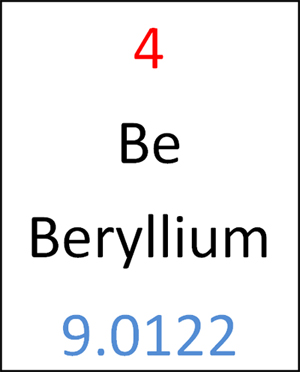The mass number (represented by the letter A) is defined as the total number of protons and neutrons in an atom. Consider the table below, which shows data from the first six elements of the periodic table. Consider the element helium. Its atomic number is 2, so it has two protons in its nucleus. Molar mass serves as a bridge between the mass of a material and the number of moles since it is not possible to measure the number of moles directly. Key Terms molar mass: The mass of a given substance (chemical element or chemical compound in g) divided by its amount of substance (mol).
The mass number of an atom specifies the numbers of particles in the nucleus. It is the sum of the number of protons and neutrons. In scientific writing, the mass number is usually located to the upper left of an atom’s symbol. When given together with the atomic number, or the number of protons, the mass number tells an atom’s element and isotope.
An atom consists of protons, neutrons and electrons. Both protons and neutrons are located in the nucleus of an atom and have masses roughly 1,800 times larger than the more mobile electrons. Protons and electrons have opposite electrical charges; for an atom to be electrically neutral, the number of protons must equal the number of electrons. Neutrons have no electrical charge.

The number of protons in an atomic nucleus determines which element the atom is. An atom with eight protons is an oxygen atom, for example. The number of neutrons in an atom, however, can vary somewhat and remain the same element; these varieties are called isotopes. An oxygen atom can contain eight, nine, or 10 neutrons and still be stable. Adding the number of protons and neutrons together gives the mass number.
A convention is commonly used for representing information about atoms in writing. An atom’s symbol on the periodic table indicates the atomic number. The mass number is located in the superscript position to the left of the atom symbol. A net electrical charge, if present, is written in the superscript position to the right. These three pieces of information reveal the total number of protons, neutrons and electrons, respectively.
The existence of different isotopes is the result of radioactive decay. One of the four fundamental forces of nature, the weak nuclear force, causes atoms to release energy without any contact with other matter. In alpha decay, two protons and two neutrons escape an atom entirely. In beta decay, a neutron can change into a proton. In this case, the mass number will stay the same, but the atomic number will increase by one.
Mass Number Is The Sum Of

Mass Number Is
It is important to distinguish mass number from atomic mass. The mass number is always an integer with no associated units. The atomic mass is a measurement of an atom’s mass and must have units of mass. While any unit for mass is valid, the most common unit used for atomic mass is the atomic mass unit. One atomic mass unit is equal to 1.66 x 10-24 grams.



